
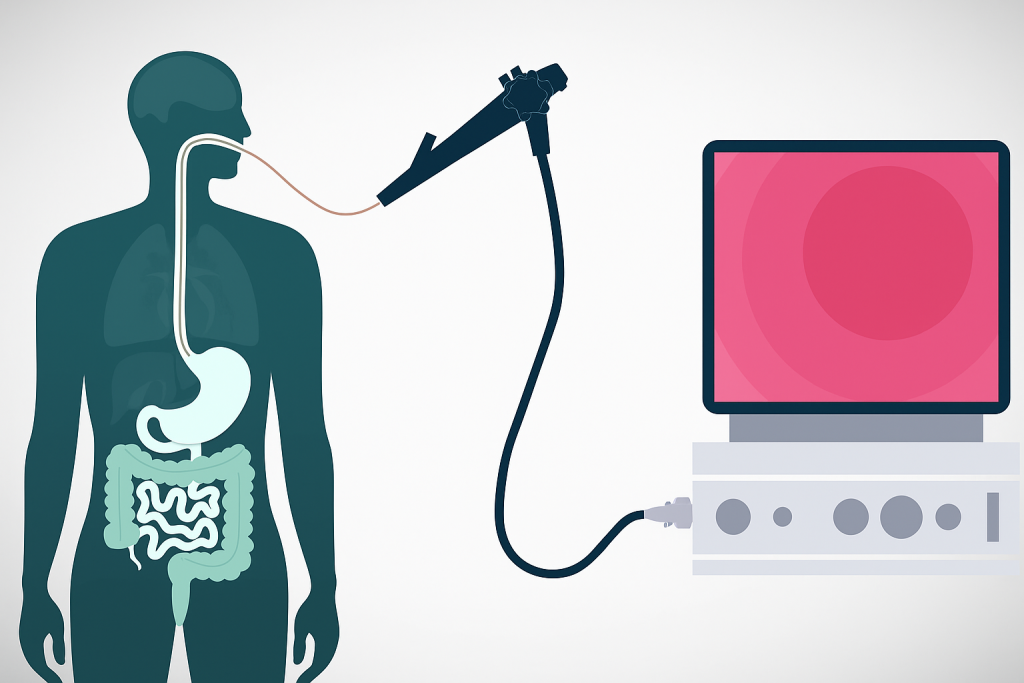
Recent advances in gastrointestinal electrophysiology are opening new possibilities for non-invasive diagnostics and real-time monitoring of the digestive system. A new study “An ingestible device for gastric electrophysiology” published in Nature Electronics (2024), presents MiGUT a swallowable device that records internal biopotential signals for gastric slow waves .
To validate electrode contact with stomach tissue the researchers used electrical impedance spectroscopy (EIS) referencing Sciospec’s impedance measurement technology. This step was crucial to ensure reliable signal acquisition and optimize the device’s performance.As the field advances, precise EIS tools like Sciospec’s ISX-3 are proving essential in developing safe and effective biomedical devices.
*You, S. S., Gierlach, A., Schmidt, P., Selsing, G., Moon, I., Ishida, K., Jenkins, J., Madani, W. A. M., Yang, S.-Y., Huang, H.-W., Owyang, S., Hayward, A., Chandrakasan, A. P., & Traverso, G. An ingestible device for gastric electrophysiology. Nature Electronics (2024). https://www.nature.com/articles/s41928-024-01160-w
The MiGUT device opens new possibilities for understanding digestion detecting stomach disorders early and monitoring gut activity in real time. But to work reliably the device needs to stay in good contact with the stomach lining to pick up clear signals.
This is where electrical impedance spectroscopy (EIS) becomes essential. The research team used Sciospec’s impedance technology to evaluate the contact performance of the electrode ribbon specifically by measuring the impedance between the electrodes and stomach tissue. These measurements were crucial to confirm that the electrodes would remain in firm, consistent contact with the mucosa during signal acquisition even as the subject moved or fed.
🔍Interested in how impedance spectroscopy supports real-world signal validation? Keep Reading or take a shortcut and ask us directly to discuss your use case.
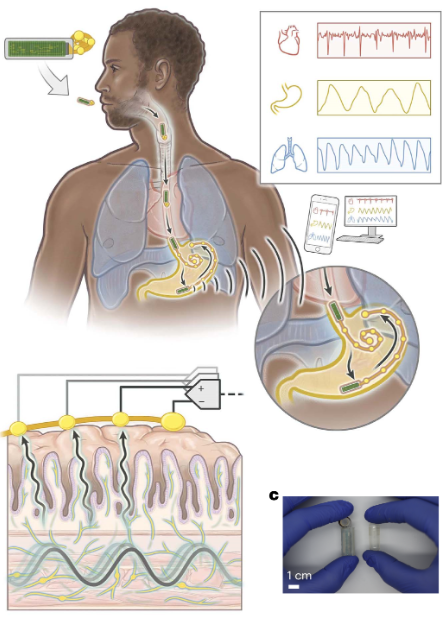
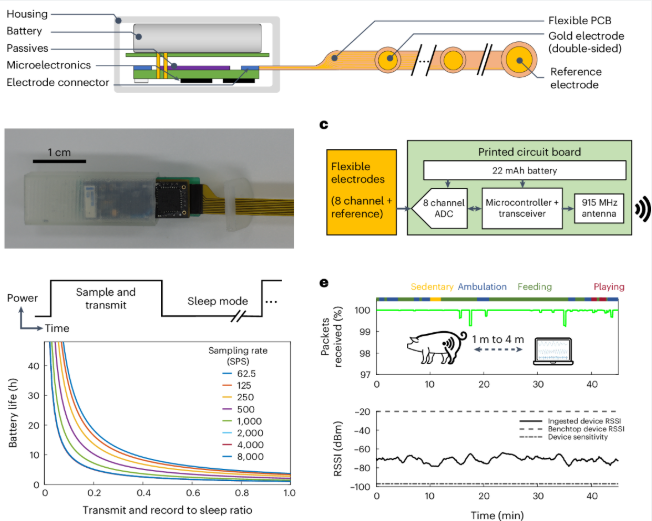
The Sciospec ISX-3 Impedance Analyzer served as a reference system and validation tool during the early-stage development and electrode testing for the MiGUT device. Its precision and versatility enabled the researchers to perform several key tasks:
Thanks to the ISX-3’s flexible configuration and detailed impedance output the researchers were able to iterate quickly and optimize the electrode system while saving time and ensuring data reliability.
🔍 Looking for more answers ? Check out our detailed FAQ section further down to learn how our solutions support bioimpedance research with reliable performance and adaptability.
The ISX-3 is designed to meet the needs of advanced bioimpedance research across a range of disciplines. For GI signal acquisition, electrode optimization or ingestible device development its features provide advanced flexibility and control and control:
These capabilities help researchers move from theory to working prototype faster with confidence in the accuracy of their signal pathway validations.
⚙️Ready to accelerate your research with precise lab-grade impedance analysis ?
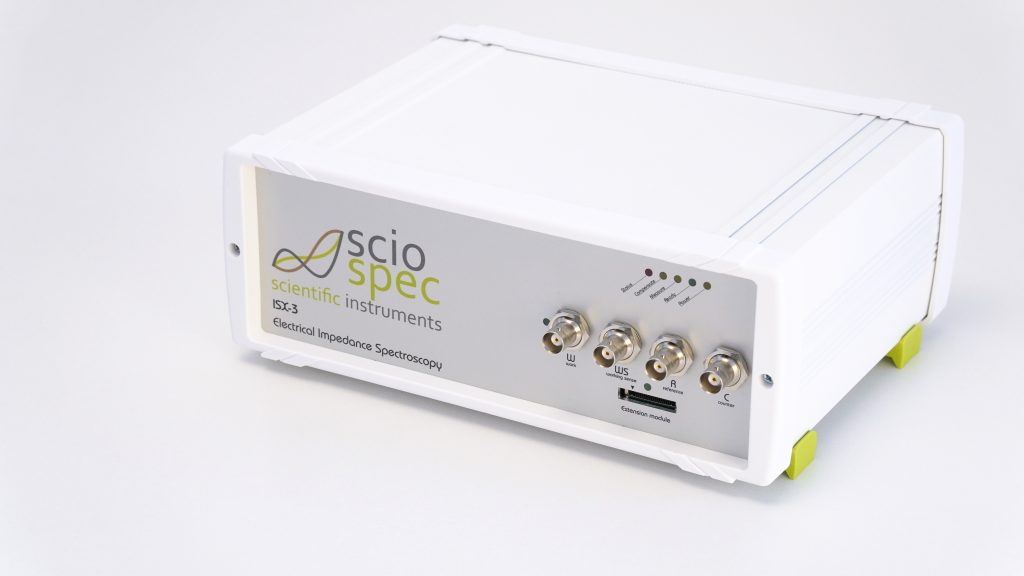
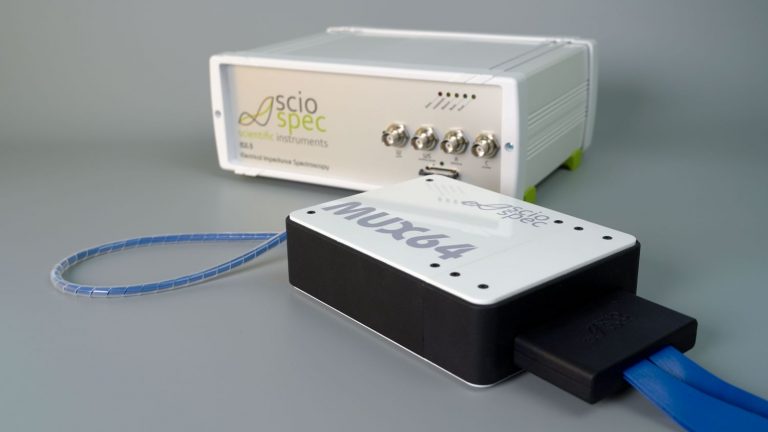
Many biomedical research projects evolve over time from single-electrode concepts to full sensor arrays or high-throughput setups. The ISX-3 is built for that growth. With support for multiplexer expansion modules you can scale from a single measurement channel to 32, 64, or even more.
This is especially relevant for projects involving:
Whether you’re testing various electrode designs in parallel or conducting long-term monitoring on multiple sites the ISX-3’s channel scalability reduces complexity while increasing measurement speed.
Need a scalable solution for high-channel-count impedance measurements? Explore our range of multiplexers or simply contact us for a quick solution!
Impedance Tools for Clinical Research Readiness
For researchers operating closer to clinical applications or medical device development, Sciospec offers medical research solutions with safety features optimized for regulated environments. The medical research version of the ISX-3 includes features specifically optimized for such settings.
This version is ideal for labs working with biomedical implants, ingestibles or diagnostics that need to meet higher safety or compliance standards.
🏥Planning clinical research or medical product development ?
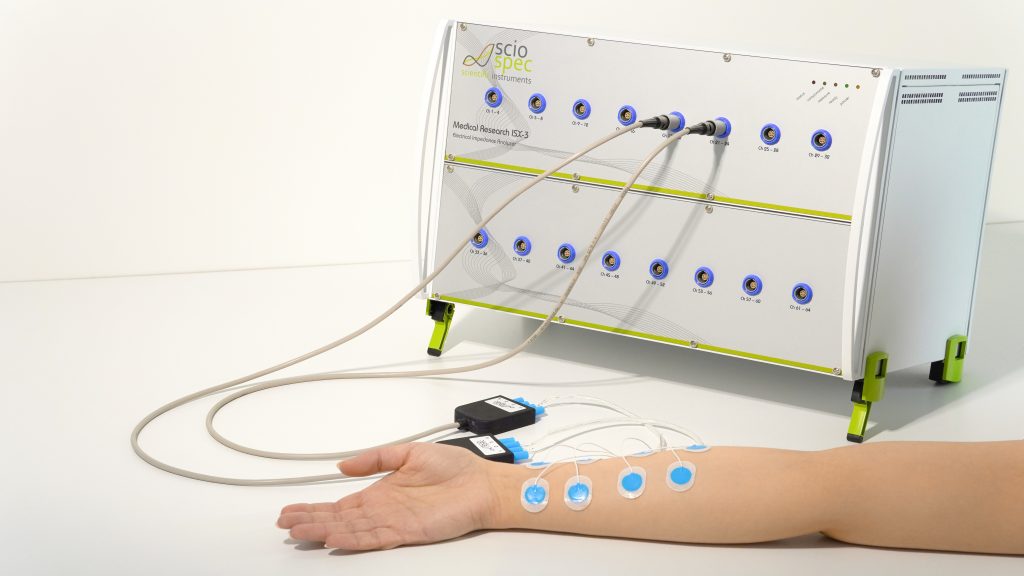

Our experts are ready to help you understanding how this technology works and how you can apply and integrate it into your work. Get in touch today to get a personalized consultation to enhance your work with our advanced solutions
MiGUT (Multimodal electrophysiology via Ingestible, Gastric, Untethered Tracking) is an innovative swallowable device designed to record electrical signals directly from the stomach lining. It offers a non-invasive way to monitor gastrointestinal activity.
💡The research team used Sciospec’s ISX-3 impedance analyzer to validate electrode contact quality, ensuring reliable signal capture.
MiGUT uses an electrode ribbon that unrolls inside the stomach to contact the mucosa and record electrical activity such as gastric slow waves.
💡Sciospec’s ISX-3 impedance measurement technology was crucial in testing the electrode-tissue interface for stable and accurate recordings.
Yes, the device is designed to function in freely moving and feeding animals, maintaining electrode contact even during natural movements. This was confirmed with impedance data collected using Sciospec’s ISX-3, supporting the device’s robustness.
Non-invasive gastric monitoring is possible using ingestible devices like MiGUT, which can record electrical signals from inside the stomach by deploying electrodes that contact the mucosa. Ensuring reliable data from these sensors requires validating their contact quality, often done using electrical impedance spectroscopy. Instruments like Sciospec’s ISX-3 impedance analyzer provide the precise measurements needed to optimize such devices for accurate signal recording.
Key signals include the gastric slow wave, respiration, and heart signals. Capturing these requires stable sensor contact with the stomach lining. Techniques such as impedance measurement help researchers verify sensor placement and signal quality, with devices like the ISX-3 playing a key role in these assessments.
Impedance measurement helps confirm that electrodes are properly contacting tissue and that the recorded signals are genuine, not noise or interference.
💡The ISX-3 from Sciospec offers sensitive and reliable impedance testing, which is crucial for developing safe, effective ingestible sensors.
Yes, recent studies show that devices like MiGUT maintain effective electrode contact and signal transmission even during natural movements and feeding. This robustness is verified through impedance data collected with tools such as the ISX-3, ensuring the device works reliably in real-world conditions.
High-precision analyzers like Sciospec’s ISX-3 offer broad frequency ranges and scalable channel options, enabling detailed testing of bioelectrical interfaces in complex environments. This flexibility supports the design and validation of innovative devices like ingestible sensors for gastrointestinal monitoring.
The MiGUT study is a strong example of how innovative biosensing platforms and rigorous signal validation using impedance spectroscopy go hand in hand. While the ingestible device captures valuable physiological signals, it is impedance characterization tools like the ISX-3 that help ensure these systems are reliable, safe, and effective from the earliest stages of development.
Whether you’re working on next-gen diagnostics, ingestible electronics, or biosensor validation Sciospec’s modular and scalable impedance solutions are built to support you from start to finish.
🚀 Ready to integrate EIS into your bioimpedance research?
🔍 Learn more about the ISX-3 Impedance Analyzer
🤝 Contact our team to discuss your specific use case.
💡Curious for more? Check out our latest developments and products.
🧪Want to try it yourself? Contact us for more information
🚀Looking for a tailored solution? Our experts can help!
📢 Follow us on LinkedIn for more updates.
#Innovation #Sciospec #ingestibledevice
#gastricelectrophysiology #gastrointestinalmonitoring
#bioelectricalsignalsstomach
explore by relevant keywords
…or just browse our most recent posts: